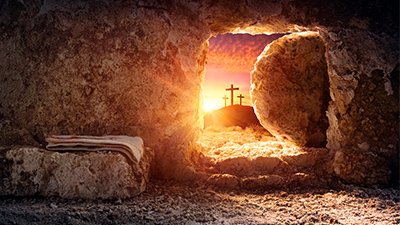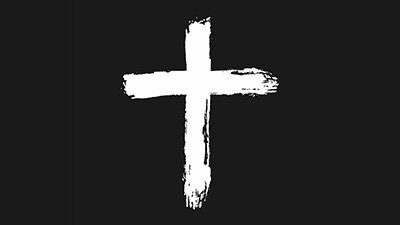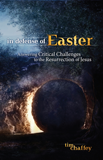
The Good Shepherd and the Three Gardens
Tim Chaffey, AiG–US, explains how the three gardens are linked and how Jesus, the Good Shepherd, offered Himself as the final, once for all sacrifice.
While the Lord originally called all creation “very good
” (Genesis 1:31), He seems to have a special affinity for certain people and places. For example, He apparently holds a special place in His heart for shepherds. David, a man after God’s own heart (1 Samuel 13:14), was a shepherd early in his life. He wrote the famous words, “The Lord is my Shepherd,
” which Jesus likely had in mind when He declared that He is “the good shepherd
” (John 10:11). Of all possible occupations, it was lowly shepherds to whom the angel appeared and announced “good tidings of great joy
” when Jesus was born (Luke 2:8–14).
The Bible frequently uses the shepherd as a picture of God (Isaiah 40:11; Zechariah 13:7; Hebrews 13:20) or the leader(s) of His people (Zechariah 10:3; Acts 20:28; 1 Peter 5:2). His followers are often compared to sheep (Jeremiah 23:1; Ezekiel 34:6; John 10:11–16; Acts 20:28; 1 Peter 5:2), while those who seek to harm His people are called wolves (Matthew 7:15; 10:16; Acts 20:29).
The Garden of Gethsemane
Similarly, it seems that God has an affinity for gardens, as three of the most important events in human history occurred in these places. On the night of His arrest, Jesus led His followers to the Garden of Gethsemane on the Mount of Olives where He poured out His soul to the Father in prayer (Matthew 26:36–46). He pleaded for the protection and unity of His immediate disciples and for all of us who would come to faith through their ministry (John 17:15–23).
Perhaps most significant is that it was also during this time in the garden that Jesus affirmed His commitment to carry out the plan of redemption—no matter how agonizing it would be.
He knelt down and prayed, saying, “Father, if it is Your will, take this cup away from Me; nevertheless not My will, but Yours, be done.” Then an angel appeared to Him from heaven, strengthening Him. And being in agony, He prayed more earnestly. Then His sweat became like great drops of blood falling down to the ground. (Luke 22:41–44)
Even though Jesus was “sorrowful and deeply distressed
” (Matthew 26:38), He completely submitted Himself to the Father’s will. After a period of intense prayer, Jesus went out to meet the great multitude that had come to arrest Him. He was determined to “endure the cross
” and ready to despise its shame (Hebrews 12:2).
The Tomb in the Garden
All four Gospels record the burial of Jesus in the tomb of Joseph of Arimathea. John records the following details:
Now in the place where He was crucified there was a garden, and in the garden a new tomb in which no one had yet been laid. So there they laid Jesus, because of the Jews’ Preparation Day, for the tomb was nearby. (John 19:41–42)
A few days later, Jesus gloriously conquered death by rising from the dead in that garden. Early in the morning, while it was still dark, at least five women set out with spices to visit the tomb in which Jesus had been buried (Luke 24:1, 8). When they arrived, they discovered that the massive stone had been rolled away from the opening of the tomb and that the body was no longer in the tomb.
After informing the disciples of these things, Mary Magdalene returned to the tomb where she would become the first witness of the resurrected Savior.1 At first glance, she thought Jesus was the gardener and said to him, “Sir, if You have carried Him away, tell me where You have laid Him, and I will take Him away
” (John 20:15). The fact that she thought He was a gardener reiterates John’s earlier statement that the tomb was in a garden.
Is there any special significance that these two critical events in the ministry of Jesus took place in gardens? Perhaps not, but it is interesting that these events were set in motion 4,000 years earlier in another garden. In fact, Jesus came to earth, died on the Cross, was buried in a tomb, and rose from the dead because our first parents rebelled against God in the Garden of Eden.
The Garden of Eden
“Very good.
” That is how God described the original creation upon its completion (Genesis 1:31). There was no death, sin, bloodshed, or disease in this unspoiled environment. That all changed when Adam and Eve rebelled by eating from the tree of the knowledge of good and evil (Genesis 3:6–7), shattering the perfection of this world.2
God had already told Adam that the penalty of violating His command was death (Genesis 2:17). The Lord would have been entirely justified in carrying out this sentence immediately—after all, the holy Creator must punish rebellion or He would not be just. But God is also loving, merciful, and gracious. Adam and Eve would still physically die, but the Lord delayed this aspect of their sentence.
In place of the fig-leaf coverings Adam and Eve had made for themselves, “the Lord God made tunics of skin, and clothed them
” (Genesis 3:21). These words imply that God must have killed at least one animal to make these garments, giving our first parents a vivid example of the devastation of sin. Man’s sin brought death and corrupted this world (Romans 5:12; 8:22; 1 Corinthians 15:21). No longer would Adam and Eve enjoy a flawless environment. Instead, among other things, childbirth pains would intensify and man’s labor became toilsome and less efficient as thorns and thistles would infest the ground—the ground to which they would ultimately return in death.
The death of that first animal also provided a lucid picture of sacrifice, foreshadowing what God Himself would ultimately do through Jesus Christ, the “Lamb of God,” to rescue sinners from the eternal consequences of their sin. In the years to follow that first sacrifice, other sacrifices for sin were offered to God by righteous men like Abel (Genesis 4:4), Noah (Genesis 8:20), Abraham (Genesis 22:13), and Job (Job 1:5). In the days of Moses, God gave more detailed instructions regarding sacrifices, and over the centuries the Levitical priests sacrificed millions of animals to the Lord.
The Gardens Are Linked
Whether these people realized it or not, their sacrifices all pointed forward to the greatest sacrifice of all. God Himself became a descendant of Adam, taking on human flesh and being born of a virgin, so that He could offer Himself as the final, once for all sacrifice (Hebrews 7:27). Jesus, the spotless and sinless Lamb of God, bore the sins of the world and endured the wrath of God upon Himself as He hung on the Cross. His death satisfied God’s justice, but that wasn’t the end of the plan. Three days later, in fulfillment of His promises (Matthew 20:17–19; John 2:19), Jesus victoriously rose from the grave, demonstrating His power over sin and death and guaranteeing our hope of eternal life with Him.
Man’s rebellion in the garden brought death and suffering into this world that would eventually be conquered by the glorious Resurrection of Jesus Christ in a garden.
Man’s rebellion in the garden brought death and suffering into this world that would eventually be conquered by the glorious Resurrection of Jesus Christ in a garden. Sadly, many Christians fail to recognize the importance of the events in the first garden, relegating these events to the realm of myth or allegory. Some have even claimed that Adam never existed, and others have argued that death and suffering have been around for billions of years, meaning that these things are here because God made the world that way and still called it “very good.”
This idea strikes at God’s perfectly good nature and raises a crucial theological problem. If Adam’s sin did not bring death into this world, then why would the death of Jesus, “the last Adam
” (1 Corinthians 15:45), have anything to do with our sin? Why would Jesus need to become a man to die for sin, if death was not brought into the world by man? What possible connection would there be between the death of the Savior and man’s sin, if man’s rebellion was not the cause of death? And why would the last Adam need to rise from the dead to defeat sin and death, if death had nothing to do with sin?
Without Adam’s sin in the Garden of Eden, there would be no reason for Jesus to agonize in the Garden of Gethsemane over the mental, spiritual, and physical torment He would soon undergo in our place. And without these events, there would be no glorious Resurrection of the last Adam in the garden near Calvary. By reinterpreting the early chapters of Genesis to accommodate evolution and millions of years, these Christians unintentionally undermine the message of the Crucifixion and Resurrection of Jesus by removing the history in which these events are rooted.
Conclusion
Jesus gave His followers “infallible proofs” that He had risen from the dead (Acts 1:3). God has also given us infallible proof that He created a perfect world, which we subsequently wrecked through our sin. He has revealed these things to us in His infallible Word, the Bible. Just as we can have complete confidence in the Resurrection of Jesus Christ in the garden near Calvary, we can rest assured that the events in the Garden of Eden also happened, as described in Genesis 1–3.
God may indeed have a special affinity for shepherds and gardens, but He also has an extraordinary love for each human being, whom He created in His image (Genesis 1:26–27). The Good Shepherd told Nicodemus, “For God so loved the world that He gave His only begotten Son, that whoever believes in Him should not perish but have everlasting life
” (John 3:16).
The bad news is that we have all sinned and fallen short of the glory of God (Romans 3:23), and the wages of our sin is death (Romans 6:23), just as God told Adam in the Garden (Genesis 2:17). But the good news is that the Good Shepherd willingly gave His life to redeem us from our sin. Jesus Christ offers complete forgiveness and eternal life to all who will turn from their sin (repent) and place their faith in Him, the all-sufficient, glorious, eternal, death-conquering, and risen Lord and Savior. If you have not done so already, would you call on the name of the Lord and be saved (Romans 10:9–10, 13)?
Footnotes
- There is some confusion about the sequence of events on the morning that Jesus rose. By piecing together the various reports in the Gospels, we know that Mary Magdalene informed Peter and John of the news. They may have been in a different location than the other disciples, who were likely informed by the other women. For an excellent treatment of this subject, see Dr. Elizabeth Mitchell, “The Sequence of Christ’s Post-Resurrection Appearances,” accessed March 28, 2013.
- Some people object to describing the original creation as perfect since it was eventually corrupted. However, like many other words, perfect has multiple meanings. The first definition of the term in Merriam-Webster’s is “being entirely without fault or defect.” We often use it this way when speaking of an undefeated sports team at a certain point in their season. Their record is without blemish, but it does not mean that they are incapable of losing, and most eventually do lose, at which point they are no longer perfect. The king of Tyre (Satan may also be in view here) is described this way in Scripture: “
You were perfect in your ways from the day you were created, till iniquity was found in you
” (Ezekiel 28:15, emphasis added). The third meaning of perfect in Merriam-Webster’s refers to someone or something that is “Pure, total,” and “lacking in no essential detail: complete.” This is often how we use the term when speaking of God. He is morally perfect, incapable of being corrupted. So those who object to describing the original creation as perfect are committing the fallacy of equivocation by confusing two of the ways this term can be used. Frederick C. Mish, Editor in Chief, Merriam-Webster’s Collegiate Dictionary, Eleventh Edition (Springfield, MA: Merriam-Webster, 2008), s.v. “Perfect.”
Recommended Resources

Answers in Genesis is an apologetics ministry, dedicated to helping Christians defend their faith and proclaim the good news of Jesus Christ.
- Customer Service 800.778.3390
- Available Monday–Friday | 9 AM–5 PM ET
- © 2025 Answers in Genesis



